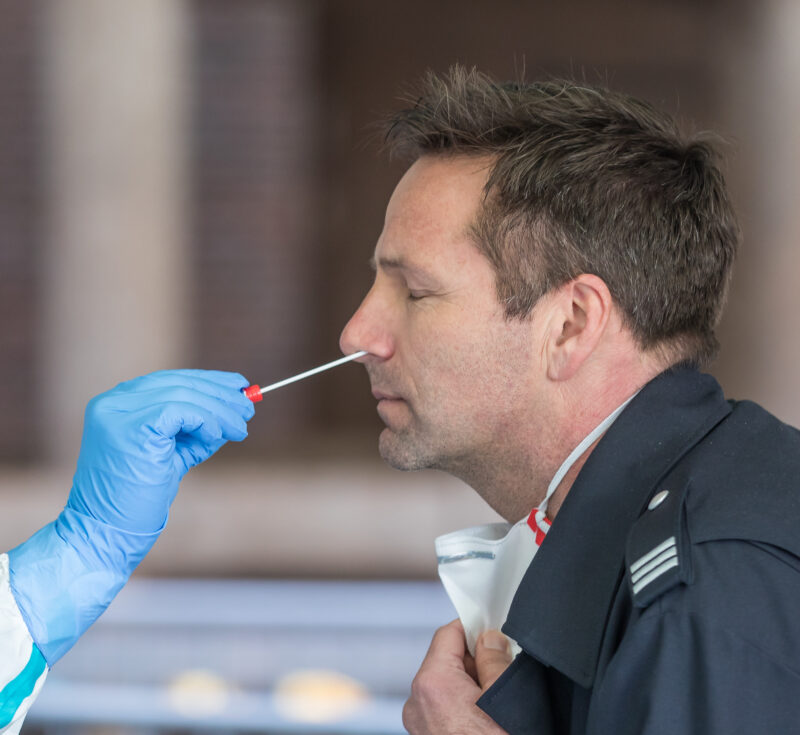Questioning the Six-Foot Rule: Was There Ever Any Science Behind It?
Covid-19’s Six feet of distance from others is one of the COVID-19 public health protocols recommended during the pandemic. This policy, recommended by the CDC, has had a remarkable influence, which affects not only daily life but also a business. Now, questions are being asked about the scientific evidence behind the policy. The Six-Foot Rule Emerges
During a congressional hearing, Dr. Anthony S. Fauci described the rule that everyone must maintain six feet of separation as “an empiric decision that wasn’t based on data.” The concession raised further questions about why, a year into a global disaster, such a critical guideline could have so dominated public health policy with a thin scientific underpinning.
Elinore McCance-Katz had spent years dubious of the six-foot rule before joining the Trump administration as assistant secretary for mental health and substance use. Over 2020, she made numerous requests to the agency for scientific justification of the rule. McCance-Katz posited that the guideline, designed to stem COVID-19 transmission, was responsible for massive harm to mental health, business, and, literally, quality of life. In a June 2020 memo to the CDC, she urged it to reconsider the ruling or develop better evidence for the rule. All these internal concerns were voiced when the six-foot guidance was in play until August 2022, albeit with modification as vaccination rates increased and schools began to re-open. McCance-Katz’s memos revealed that health agencies have been hashing out what this guideline means, and even now, there is still debate. on. **Lack of Evidence and Broader Implications

The rule’s persistence, though, has even defied its fragile scientific underpinnings. There are still signs in cities across the country instructing people to stay apart. Experts agree that social distancing did help save lives — especially earlier in the pandemic, before there were vaccines. A Brookings Institution paper found that social distancing saved lives due to behavioral changes that prevented about 800,000 deaths. At issue, though, was that the six-foot rule, in particular, has garnered concerns about scientific support. “I am a bit exasperated at the fact that we don’t have more good evidence to make better decisions,” said Andrew Atkeson, a UCLA economist and co-author of the Brookings paper. He warned that disregarding such public-led measures lacking in scientific evidence would make it impossible to take a series of reasonable public health actions in the future. Ironically, the WHO had employed a guideline distance of one meter; some argue it would have given similar benefits but much lower disruption to school and other public activities.
The six-foot rule is the “single most costly intervention the CDC recommended” throughout the pandemic, said Scott Gottlieb, former commissioner of the Food and Drug Administration.
Implications for Schools and Businesses
The six-foot rule had its most profound effect, maybe, in the education sector. Most schools couldn’t sustain such distance between students and remained shut, with specialty learning taking hold. Joseph Allen, an environmental health expert at Harvard University, criticized the rule as resting on a flawed understanding of the science about how particles move around indoors. He advocated for a three-foot rule—especially in schools—and more investment in ventilation and filtration. Businesses also struggled with the six-foot recommendation. Amazon founder Jeff Bezos questioned both the science and the practicality of the guidance.
In March 2020, Bezos reached out to the highest officials in the Trump administration and pursued other measures. However, Amazon complied with the recently imposed six-foot rule using many technologies to make that the case in all its operations worldwide.
The sources for the six-foot rule are a bit obscure. The CDC had attributed the recommendation to a panel of experts, who they said relied on a variety of scientific papers, including one from 1955 on respiratory droplets. According to Gottlieb’s book, the CDC had previously recommended a ten-foot guidance but walked it back under pressure from the Trump White House, which considered ten feet impractical.
Public Health Measures Revisited
The six-foot debate is emblematic of the challenges of crafting public health policy in the face of an unprecedented crisis. The CDC and other public health agencies initially believed the coronavirus spread primarily through droplets, which project several feet from one person to another person. That gave rise to the six-foot rule, even though later evidence indicated the virus was airborne and spread beyond six feet in enclosed spaces. Dr. Robert R. Redfield, the CDC director under the Trump administration, said in a congressional hearing that the rule was based on historical practices for other respiratory pathogens—not specific studies of COVID-19. That admission has prompted a reevaluation of how public health advice is formed and communicated. Efforts to change the rule encountered political resistance. Take the now-CDC Director Rochelle Walensky, who favored the six-foot rule but was trying to modify it: Just last month, she said the distance between the elementary school students can be shrunk to three feet if masked. Going into this experience—the pandemic—it is all the more evident that public health practice is greatly needed and guided by scientific research. As the world prepares for the eventual future crises, this balance between caution and practicality is essential, and policies must be based on substantial evidence.




+ There are no comments
Add yours